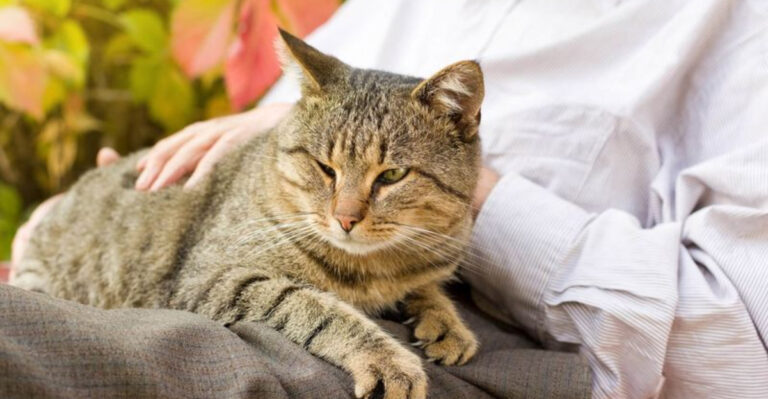15 Noises That May Set Off Aggression In Cats

Our feline friends have incredibly sensitive ears capable of detecting sounds we humans can’t even hear. While cats typically lounge peacefully, certain noises can transform your purring companion into a hissing, scratching ball of fury in seconds.
Understanding which sounds might trigger your cat’s aggressive behavior can help prevent unexpected scratches and create a more harmonious home environment.
1. Vacuum Cleaner Roars

Ever noticed your kitty bolting for cover when you pull out the vacuum? The loud motor combined with high-frequency whines creates a perfect storm of feline terror.
Many cats interpret this mechanical monster as a threat, responding with defensive aggression if cornered. The vibrations through the floor only add to their distress.
2. Hissing Air Sounds
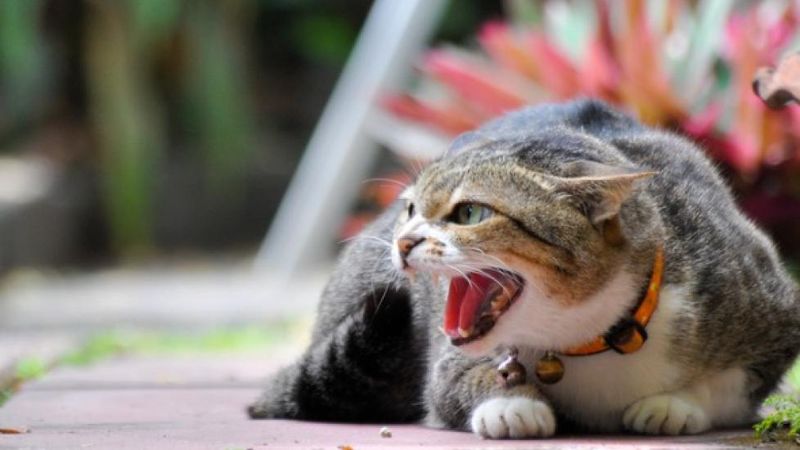
Aerosol sprays mimic the warning hiss cats use in confrontations with enemies. This sound triggers instinctive fight-or-flight responses in your furry friend’s brain.
Hairsprays, air fresheners, and even soda cans opening can provoke unexpected swipes. Your cat’s not being difficult – their ancient survival instincts are simply kicking into high gear.
3. High-Pitched Screams
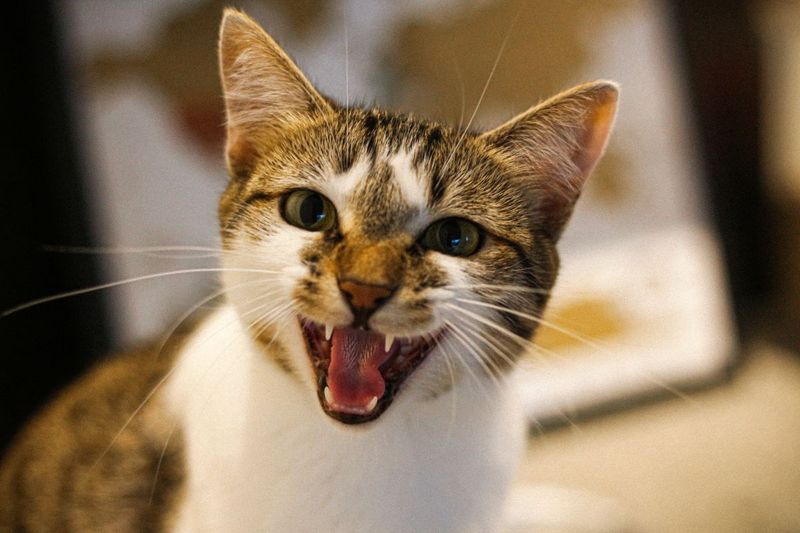
Shrill sounds like a child’s excited squeal might seem innocent enough to us, but they can pierce through your cat’s sensitive hearing range like daggers. These frequencies resemble injured prey sounds.
Evolutionary wiring tells your cat to either attack the source or flee from potential danger. Unexpected aggression might follow if your kitty can’t escape the noise.
4. Rattling Plastic Bags
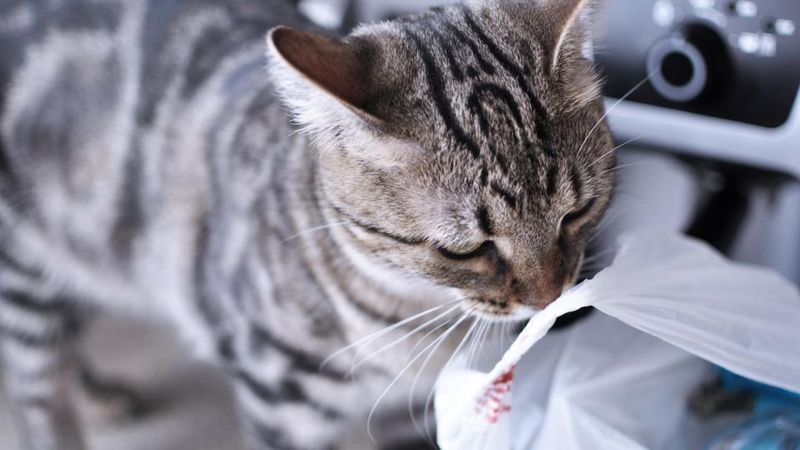
That innocent grocery bag crinkle sends some cats into defensive mode faster than you can say “catnip.” The unpredictable, sharp sounds resemble dangerous rustling in underbrush.
Your cat’s predator instincts kick in, preparing to either fight or flee. Some cats attack the bag itself, while others might redirect aggression toward nearby humans or pets.
5. Thunderous Booms
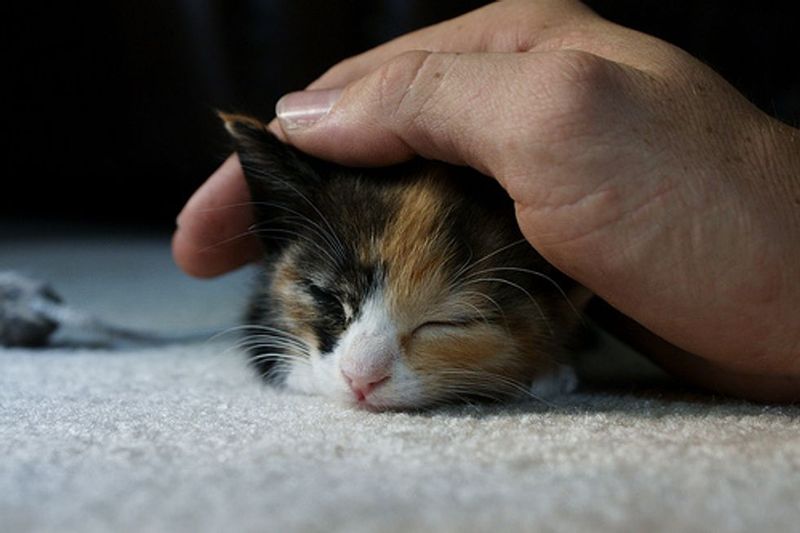
Lightning strikes followed by window-rattling thunder can transform your snuggly cat into a scratching terror. The sudden, unexplainable noise triggers primitive survival instincts.
Unable to identify or escape the threat, some cats lash out at whatever’s closest. Their pupils dilate, tails puff up, and claws emerge as they prepare to defend themselves against this invisible enemy.
6. Doorbell Chimes
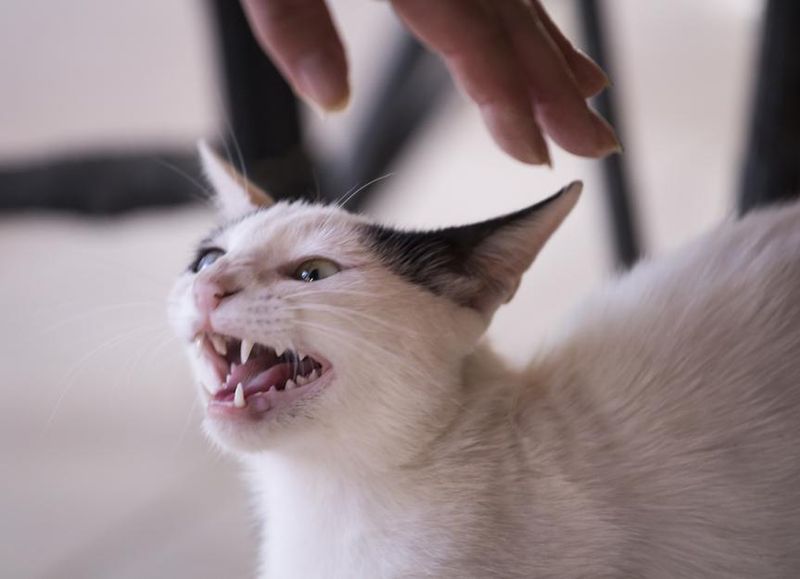
That cheerful ding-dong announces visitors to you, but signals potential invasion to your territorial feline. The sudden, jarring sound interrupts their peaceful domain without warning.
Cats thrive on predictability, and unexpected sounds mean unexpected threats. Some cats will position themselves to attack anyone entering, seeing them as intruders in their carefully monitored territory.
7. Whistling Teakettles
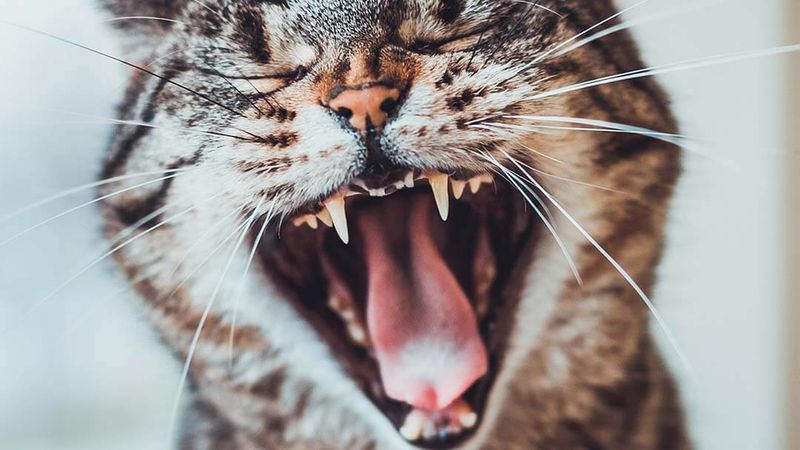
Forgotten your boiling water? That escalating whistle drives cats absolutely bonkers! The gradually increasing pitch mimics distress calls of small animals.
Your cat’s brain registers this as either prey to attack or a warning to flee. With nowhere to escape in your kitchen, aggression becomes the default response. Even calm cats might swipe at anyone approaching the offensive noise source.
8. Barking Dogs

Your neighbor’s enthusiastic pup might just be saying hello, but to your cat, those woofs sound like approaching predators. Evolution has hardwired cats to fear canine sounds.
The fight-or-flight response kicks into overdrive. When flight isn’t possible, your sweet kitty transforms into a hissing defensive machine. Even indoor cats who’ve never met a dog react instinctively to these threatening sounds.
9. Blaring Car Alarms
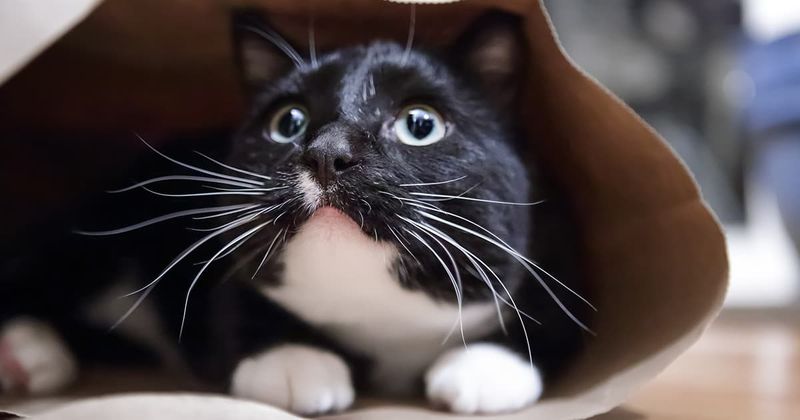
Nothing ruins neighborhood peace quite like a car alarm – especially for sensitive feline ears. The cycling, unpredictable patterns of honks and sirens create genuine distress in cats.
Unable to locate or escape the threat, your cat may redirect frustration toward you or other pets. Their pupils dilate and whiskers pull back as they prepare to defend against this mysterious sonic attack.
10. Construction Racket
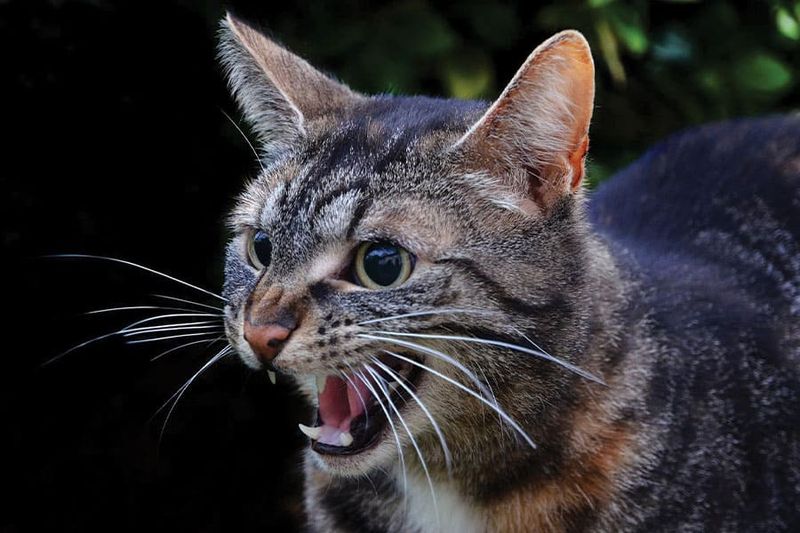
Hammering, drilling, and sawing create a cacophony that overwhelms your cat’s sensitive hearing. These sounds signal environmental instability, a major stressor for territorial animals.
Your cat can’t understand why their safe space suddenly feels dangerous. Defensive aggression commonly follows as they try to protect themselves from perceived threats. Even the calmest cats become jumpy during home renovations.
11. Sizzling Cooking Sounds

That appetizing bacon sizzle might make your mouth water, but it puts your cat on high alert. The unpredictable popping and crackling mimics small prey movements or dangerous fire.
Your cat’s hunting instincts activate while their self-preservation instincts simultaneously signal danger. This conflicting message creates confusion that can manifest as aggression, especially if you block their escape route.
12. Crinkling Aluminum Foil
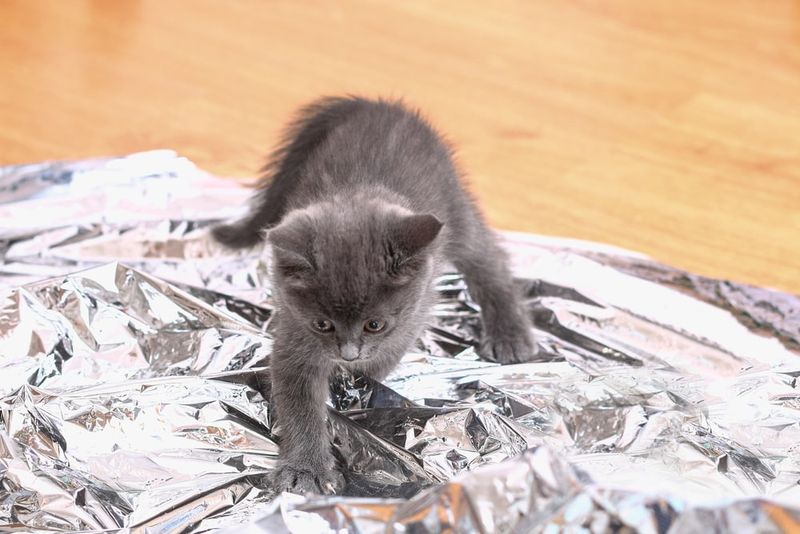
The metallic screech of aluminum foil sends shivers down many cats’ spines. This high-frequency sound falls right in their sensitive hearing range, causing genuine discomfort.
Some cats respond with fear-based aggression, while others become irritable from the auditory equivalent of nails on a chalkboard. The unpredictable nature of when the next crinkle might happen keeps them on edge.
13. Sneezing Fits

Your innocent achoo might earn you a startled swipe! Human sneezes explode without warning at volumes that can reach 90 decibels – roughly equivalent to a lawnmower starting up inches from your cat’s ears.
The sudden noise triggers their startle reflex, and some cats respond with defensive aggression. Multiple sneezes in succession can be particularly upsetting as your cat has no time to recover between auditory assaults.
14. Beeping Electronics
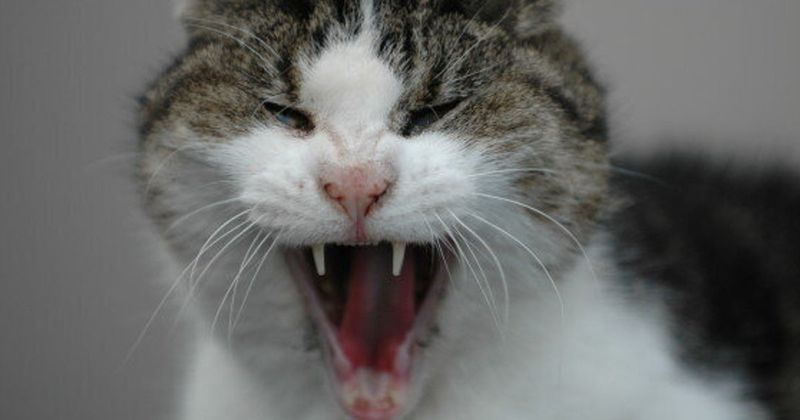
Microwave alerts, alarm clocks, and phone notifications create sharp, unexpected sounds that pierce through your cat’s concentration. These electronic chirps often fall in frequency ranges particularly irritating to feline ears.
Your cat can’t identify the source of these alien sounds, creating anxiety that manifests as aggression. Some cats will attack the beeping device itself, while others redirect toward nearby animals or people.
15. Musical Instruments

Your budding trumpet skills might impress your friends, but they’re torture for your cat’s sensitive ears. Brass and wind instruments produce sound pressure levels that can actually cause pain in cats.
String instruments like violins create high frequencies that trigger predatory responses. Your cat’s aggression isn’t criticism of your musical talent – it’s a desperate attempt to make the uncomfortable noise stop.




